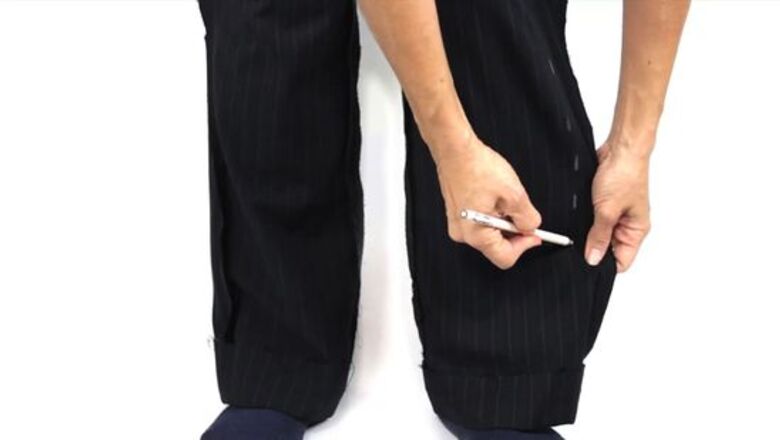
views
Determining Where to Taper the Pantlegs
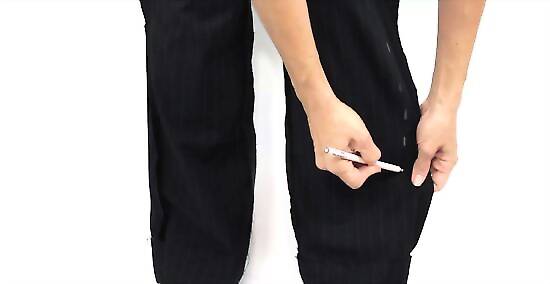
Turn the pants inside out and put them on. Put on the trousers if you want to taper them for yourself, or have the person you are tapering the pants for put them on. Make sure the pants are turned inside out. You will need to draw a line on them that will not be visible after sewing. Turning the pants inside out also exposes the old seam and this will make it easier to remove the stitches, cut the fabric, and sew the new seam.
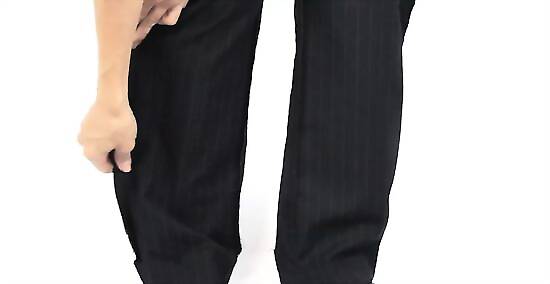
Pinch the edges of the pants where you want to taper them. Pinch along the inside and outside of the pants to find where you want to taper them. Depending on the fit you want, you may need to remove a significant amount of fabric or just a little. Pinch the pants along the inner and outer seams to find the best fit. For example, if you want the tapering to begin around your knee, then pinch the fabric on the inside and outside of your knee to find the best place to create a new seam.
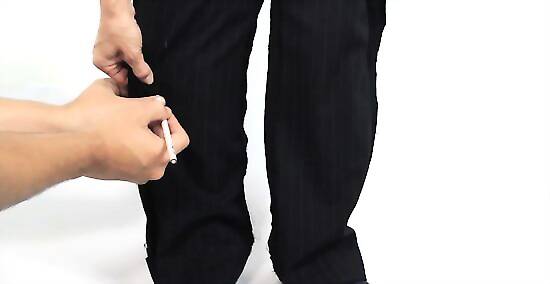
Have a friend draw a line where you want a new seam to be. It will be difficult to draw on the pants while you are wearing them, so it is best to ask a friend for help with this part. Have them draw along the inside of where you are pinching the pantlegs. You can try to mark the fabric yourself, but keep in mind that you will still need to pinch it while you mark it to get the best results.
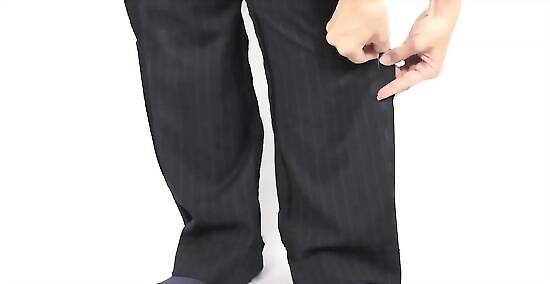
Insert pins and then draw a line if you don't have anyone to help you. If you don't have anyone who can help you by drawing a line where you are pinching, you can also insert pins into the areas where you want to taper the pant legs. Insert a pin about every 1 to 2 inches (2.5 to 5.1 cm) where you want to taper the pants. Then, draw a chalk line along the inner edges of the pins after you remove the pants. Make sure the pins are vertical (parallel to the seam). This will make it easier to create a seam line after removing the pants.

Lay a pair of tapered trousers over the trousers you want to taper. Another option for tapering trousers is to lay the pants out flat and then place a pair of tapered pants over them. Trace the outline of these pants onto your pants. Make sure to choose a pair of tapered trousers that fit you well. You will be replicating the fit of these pants on your trousers.

Check the lines with a ruler after you draw them. Hold the ruler up against the line and go over any crooked spots with the chalk. You can also use a ruler to help you check the distance from the edge of the pants to the lines. This will help to ensure that the right and left legs are the same size. For example, if the lines are 1.5 inches (3.8 cm) from the edges at the bottom of the trousers on 1 leg, they should be the same on the other leg.
Removing the Old Seam

Use a seam ripper to take out the old stitches. Keep the pants turned inside out and use a seam ripper to cut the stitches along the areas you want to taper. Run the hooked part of the seam ripper along the stitches to sever them and then gently pull apart the fabric at the seams to loosen the stitches. Pull out the severed thread with your fingers. You don't have to remove all of the stitches if you are not tapering the whole leg. Just remove stitches where you want to take in the seam.
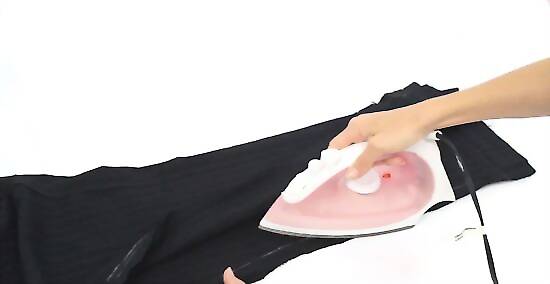
Create a second chalk line 0.5 in (1.3 cm) from the first line you drew. After the old stitches are out, flatten out the fabric and line up the raw edges. Then, draw a second chalk line about 0.5 inches (1.3 cm) from the first line. If the fabric won't lay flat, you may need to iron it.
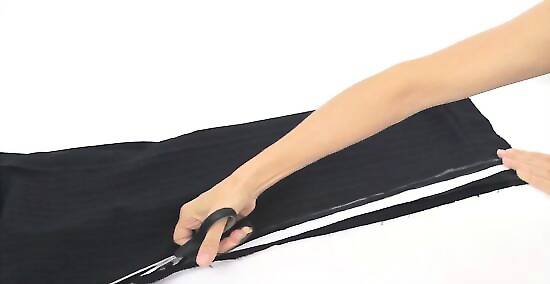
Cut along the second chalk line to remove the excess fabric. The second line you drew onto the fabric will be the new raw edge for the parts of the pants you want to taper. Cut the fabric along this line. Use a sharp pair of scissors and cut straight along the lines.
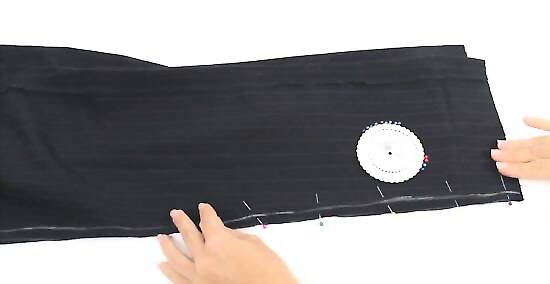
Pin the fabric along the first line. After you have finished cutting the fabric, insert pins along the first line you drew on the fabric. This will be the new seam for your trousers. Insert a pin every 3 inches (7.6 cm) along the line to keep the fabric together while you sew. Insert these pins perpendicular to the edge of the fabric. This will make it easier to remove them as you sew. Repeat this for the other lines.
Sewing the New Seam

Thread your sewing machine with a durable matching thread. Choose a strong thread for the seams on your trousers. These seams need to be strong, especially if you will be making the trousers slim or skinny. Choose a thread color that matches the color of your fabric as well, such as black thread for black pants. Try using a denim thread for a strong, durable option.

Set your sewing machine to the straight stitch setting. The straight stitch is ideal for sewing seams on pantlegs and it is an easy stitch to use. This stitch is usually the first setting on sewing machines, but check your instruction manual to be sure. Make sure that your sewing machine is set to the recommended tension and stitch length for using the straight stitch.
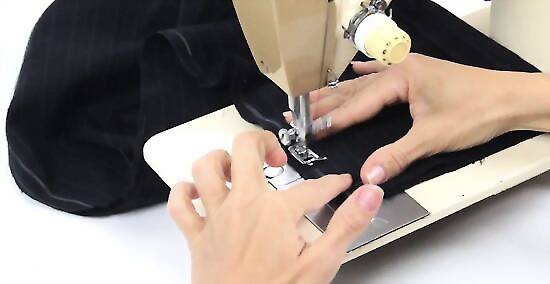
Sew a straight stitch along the first line on the fabric. Sew along the line on your fabric. Sew up from the bottom of the pantleg. If the line goes off the edge of your pants, then sew right off the edge. If the line goes all the way up the pantleg to the crotch, then sew all the way to the crotch. Make sure to remove the pins as you go. Don't sew over them or you may damage your sewing machine.
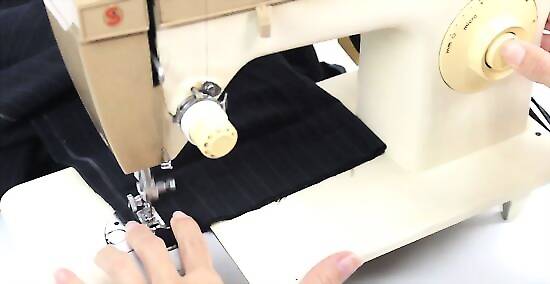
Backstitch when you reach the end of the line. To backstitch, hold down the lever on the side of your sewing machine and apply gentle pressure to the pedal. This will reverse the direction of the feed dogs (gears under the needle that move the fabric) so you can sew in the opposite direction. Backstitch for about 1 to 2 inches (2.5 to 5.1 cm). Then, release the lever and sew to the end of the line again. Backstitching will strengthen the ends of your stitches.
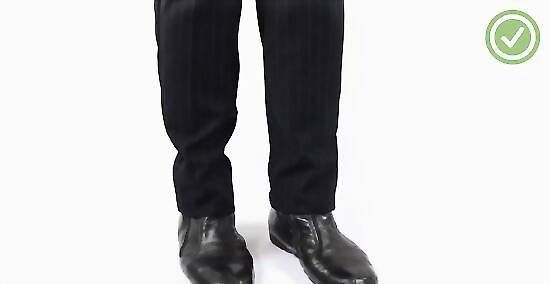
Repeat the process for the other leg. After you finish sewing the lines on the first pantleg, switch over to sewing the other one. Repeat the same process so that both pantlegs will have the same amount of tapering.


















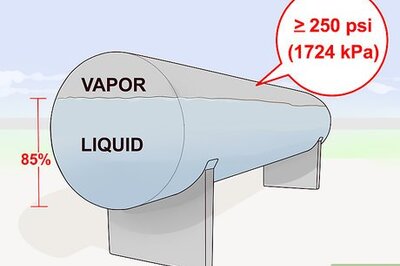

Comments
0 comment